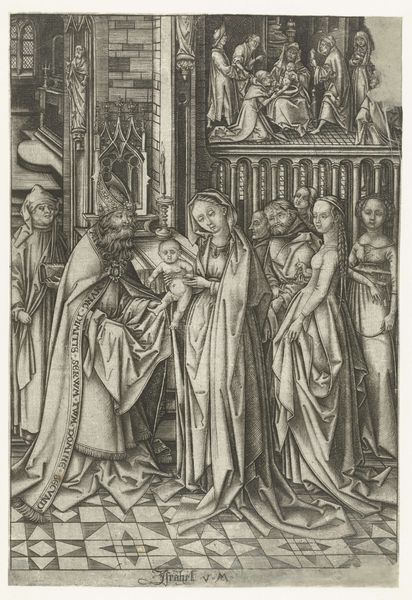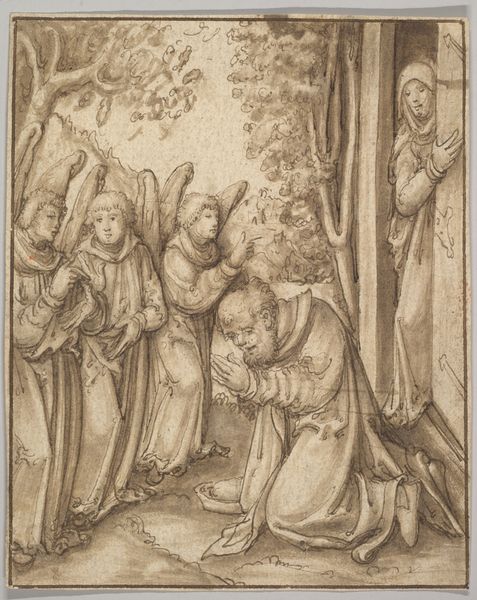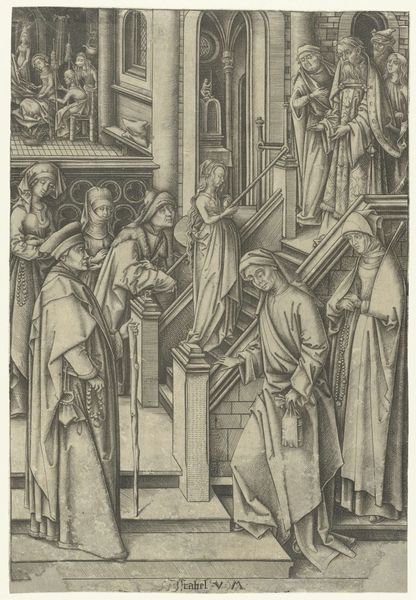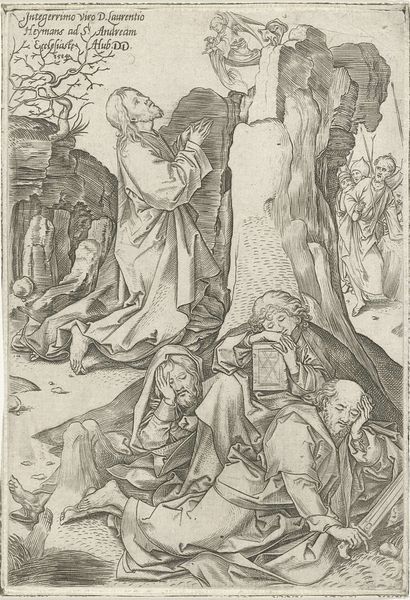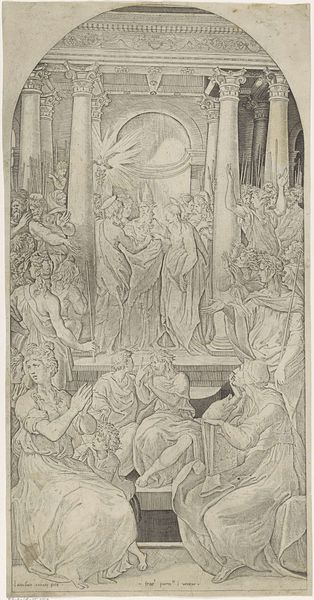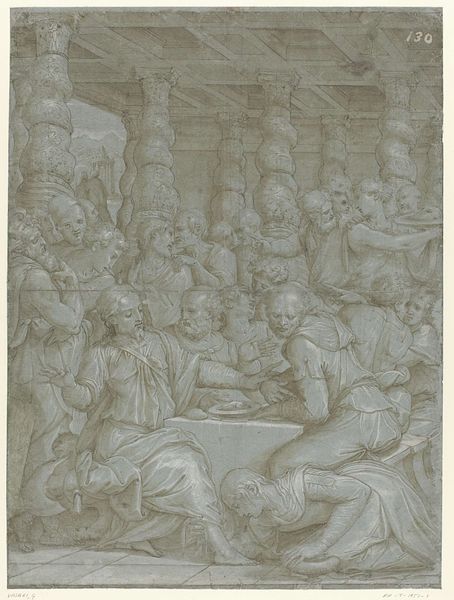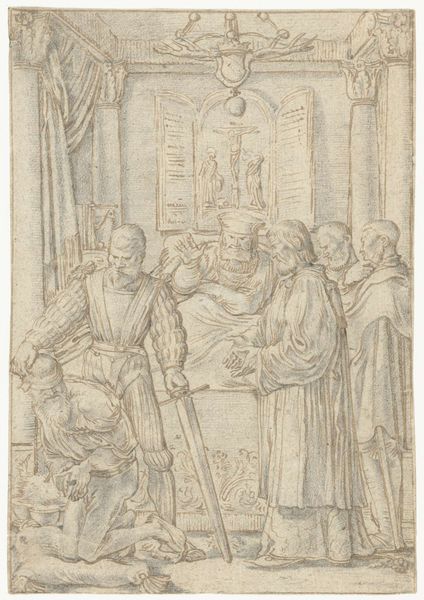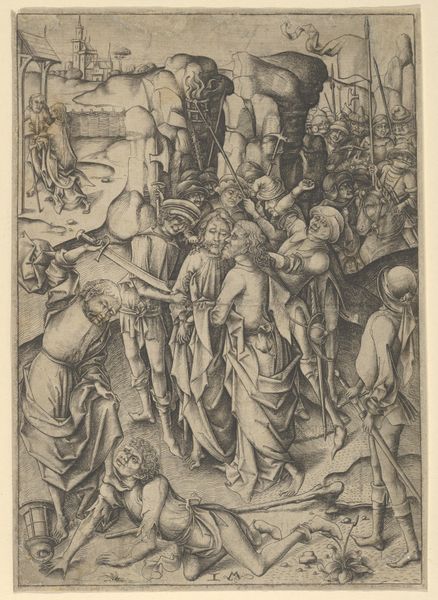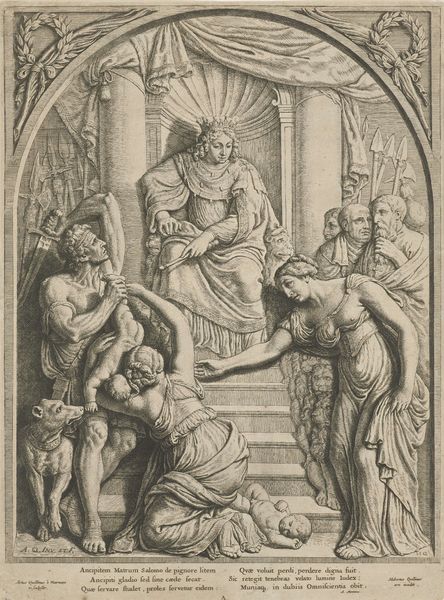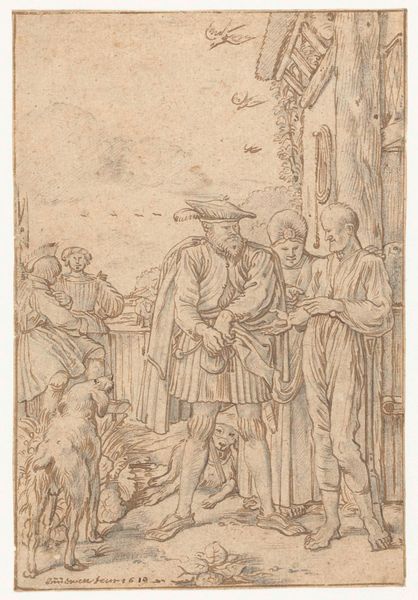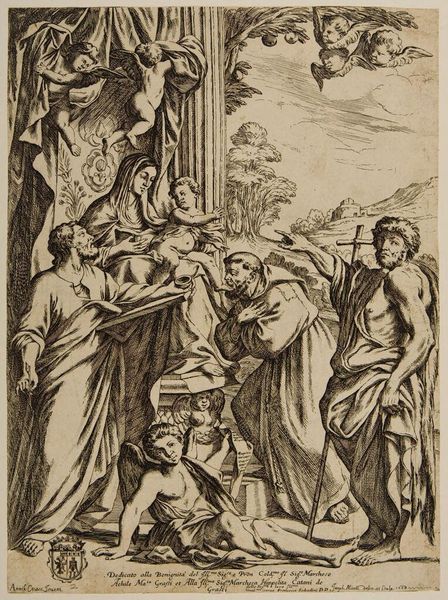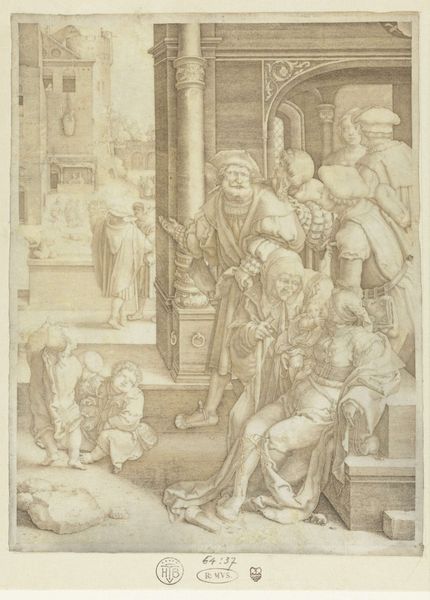
drawing, pencil
#
drawing
#
narrative-art
#
figuration
#
11_renaissance
#
pencil
#
history-painting
Copyright: Public Domain: Artvee
Editor: Here we have a pencil drawing titled "Christ Cleansing the Temple," by Edward Burne-Jones. It depicts a scene of commerce disrupted, and what strikes me is the density of figures all rendered in such delicate detail. What can you tell us about this work? Curator: Well, considering the process and materials, a pencil drawing like this offers insight into the artist’s labor. Think about the repetitive movements required to build up those tones, the pressure exerted on the paper. Burne-Jones, deeply involved with the Arts and Crafts movement, surely understood the inherent value in skilled handiwork. Are we meant to contemplate not only the act of Christ but also the act of creation embodied in the artist's repetitive movements? Editor: That's interesting! So you're saying the medium itself, the humble pencil, elevates the scene to more than just a biblical story, adding a layer about artistic labor and perhaps critiquing industrial production? Curator: Precisely. And consider the context. Burne-Jones was working amidst debates about industrialization versus craft. This drawing, regardless of its subject matter, functions as a testament to pre-industrial modes of production. Does this focus on process challenge our modern expectations for immediate artistic gratification, something we might be prone to do with today’s technologies? Editor: I hadn't thought about it that way. So, beyond the biblical narrative, the drawing comments on the value of skilled craftsmanship and invites reflection on how we produce and consume art, which adds a totally different layer of understanding of the work itself. Thanks! Curator: Exactly, viewing the artwork through its material making helps us question and consider the art, artist, and audience.
Comments
No comments
Be the first to comment and join the conversation on the ultimate creative platform.
